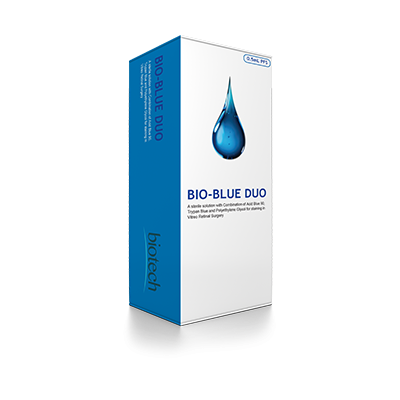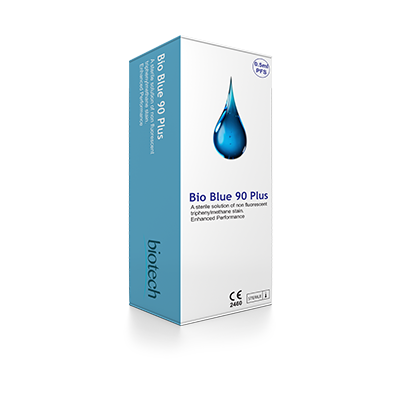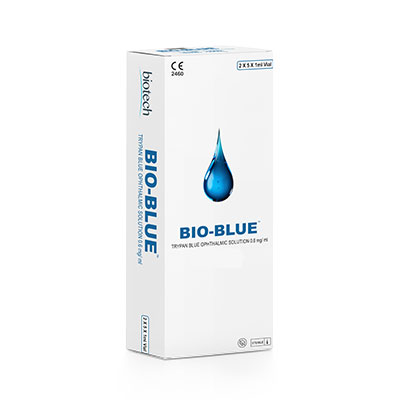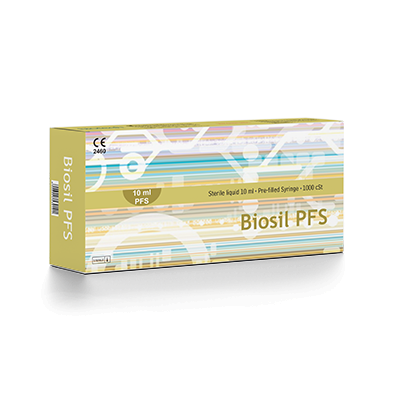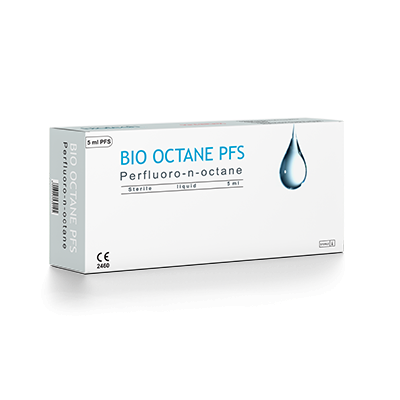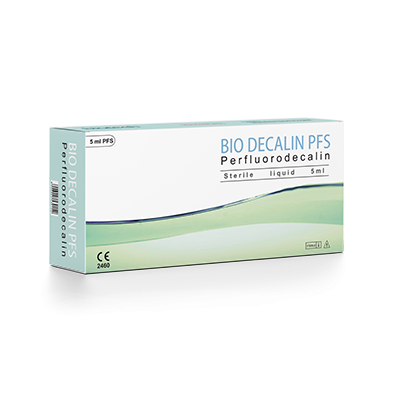Vitreoretinal Product Range
Quick Links
No products found in this company category.
What is DYES For Vitreoretinal Surgery?
DYES for the vitreoretinal surgery are advanced pharmaceutical products specifically formulated for ophthalmic procedures targeting the vitreoretinal area. These specialized colorants or staining agents are meticulously designed to enhance visualization, aid in precise surgical maneuvers, and contribute to accurate diagnoses of vitreoretinal disorders. They play a crucial role in staining specific retinal tissues and membranes, allowing surgeons to navigate delicate structures with precision during retinal surgeries and diagnostic assessments. DYES for the vitreoretinal surgery are integral components of modern ophthalmic practice, enabling enhanced visualization and improved outcomes in vitreoretinal procedures.
What are The Functions of DYES For Vitreoretinal Surgery?
The function of DYES for vitreoretinal surgery is multifaceted, encompassing crucial roles in both surgical interventions and diagnostic procedures targeting the vitreoretinal area.
- These specialized colorants or staining agents serve to enhance visualization by selectively staining specific retinal tissues and membranes during ophthalmic procedures.
- By providing optimal contrast and visibility, these dyes enable surgeons to identify and navigate delicate structures with precision during vitreoretinal surgeries.
- The primary function of DYES for vitreoretinal surgery is to optimize visualization, thereby contributing to improved surgical outcomes and diagnostic accuracy in vitreoretinal procedures.
- Their versatility and effectiveness make them indispensable tools in modern ophthalmic practice, enhancing the quality of care provided to patients with vitreoretinal conditions.
What Are The Uses of DYES For Vitreoretinal Surgery?
DYES for vitreoretinal surgery find application in a variety of ophthalmic procedures, each contributing to enhanced visualization and accurate diagnosis.
- During retinal surgeries, these dyes facilitate the staining of internal limiting membranes and epiretinal membranes, allowing surgeons to navigate and manipulate with increased precision.
- DYES for vitreoretinal surgery are essential in enhancing visualization and facilitating accurate diagnoses, thereby improving patient outcomes and guiding appropriate treatment strategies in the management of vitreoretinal conditions.
How Many Types of DYES For Vitreoretinal Surgery?
Within the realm of ophthalmology and the vitreoretinal product range, various types of dyes serve distinct purposes. Vital dyes, including trypan blue and brilliant blue, are commonly used in retinal surgeries to stain specific retinal membranes. Fluorescein and indocyanine green, on the other hand, are essential for diagnostic angiography procedures. The diversity in dye types allows for a tailored approach based on the specific requirements of the vitreoretinal procedure at hand.
- Acid Dyes: Acid dyes are water-soluble dyes primarily used for protein-based fibers such as wool, silk, and nylon. These dyes form ionic bonds with the protein molecules in the fibers, resulting in vibrant and long-lasting colors. Acid dyes are versatile and offer a wide range of colors, making them suitable for various applications in the textile and medical industries.
- Vat Dyes: Vat dyes are insoluble in water and are primarily used for cellulose-based fibers such as cotton and linen. These dyes require a reduction process to become soluble and bind to the fibers. Vat dyes are known for their excellent color fastness and resistance to fading, making them suitable for applications where durability is essential.
- Synthetic Dyes: Synthetic dyes are organic compounds synthesized through chemical processes. These dyes offer a wide range of colors, shades, and properties, making them versatile for diverse applications in textiles, cosmetics, food, and medicine. Synthetic dyes are widely used in the vitreoretinal product range due to their predictable performance and availability in various formulations.
- Natural Dyes: Natural dyes are derived from plant, animal, or mineral sources and have been used since ancient times to impart color to textiles and other materials. Examples of natural dyes include indigo, cochineal, and turmeric. While natural dyes offer a sustainable and environmentally friendly alternative to synthetic dyes, they may exhibit variability in color intensity and stability.
- Reactive Dyes: Reactive dyes chemically react with specific components within the fibers, resulting in a covalent bond between the dye molecules and the fiber molecules. This chemical bonding process ensures excellent color fastness and wash resistance, making reactive dyes suitable for applications where durability is paramount. Reactive dyes are commonly used in the textile industry for dyeing cotton, wool, and silk fibers.
- Basic Dyes: Basic dyes are cationic dyes that form electrostatic bonds with the negatively charged sites on the fiber molecules. These dyes are commonly used for staining biological tissues and are employed in medical applications such as histology and ophthalmic surgery. Basic dyes offer high staining intensity and are particularly useful for enhancing contrast and visualization during surgical procedures.
What are The Benefits of DYES For Vitreoretinal Surgery?
Dyes in the vitreoretinal product range offer crucial advantages in ophthalmic procedures. They enhance visualization during surgery, enabling precise identification and manipulation of retinal structures. These dyes aid in diagnosis by highlighting retinal abnormalities during angiography, guiding treatment decisions effectively. By minimizing intraoperative complications and maximizing surgical precision, dyes contribute to improved outcomes and patient satisfaction. Ultimately, their use in vitreoretinal procedures enhances safety, facilitates accurate diagnoses, and leads to better visual results, affirming their indispensable role in modern ophthalmology.
What are The Side Effects of DYES For Vitreoretinal Surgery?
While the side effects of dyes for vitreoretinal surgery are generally minimal, it is essential to acknowledge potential risks associated with their use. Allergic reactions to dye components may manifest as ocular inflammation or, in rare instances, systemic allergic responses. Transient changes in intraocular pressure following dye injection require monitoring to prevent complications. Prolonged or excessive use of certain dyes may lead to ocular toxicity, although such occurrences are rare. It is crucial for surgeons and patients to be aware of these potential risks to ensure appropriate management and mitigate adverse outcomes associated with vitreoretinal procedures.
What are The Advantages of DYES DYES For Vitreoretinal Surgery?
- Enhanced Visualization: Dyes within the vitreoretinal product range improve the visibility of retinal structures during surgery and diagnostic procedures.
- Improved Surgical Precision: Dyes enable surgeons to perform more accurate and controlled maneuvers, minimizing the risk of damage to surrounding tissues.
- Facilitated Diagnosis: Dyes aid in the diagnosis of vitreoretinal disorders by highlighting abnormalities in retinal vasculature and pathology.
- Customized Treatment Approach: Different types of dyes allow for a tailored approach to ophthalmic care, optimizing treatment outcomes.
- Reduced Complications: By enhancing visualization and precision, dyes help reduce the risk of intraoperative complications, leading to smoother surgeries.
Are What DYES Safe?
Overall, dyes used in vitreoretinal procedures are considered safe when administered by experienced ophthalmic surgeons following established protocols. However, as with any medical intervention, there are inherent risks associated with their use. To ensure safety, surgeons must adhere to established guidelines regarding dye administration and intraocular surgery. Thorough preoperative evaluations are essential to assess patients' suitability for vitreoretinal procedures and to identify any potential contraindications or allergic reactions to dye components. By incorporating safety measures and adhering to best practices, surgeons can minimize risks and ensure the safety and efficacy of vitreoretinal procedures involving dyes.
Categories
Company
Media
Follow Us
© Copyright Biotech /Terms Of Use - Privacy Policy
Version 2_CT_1212222

